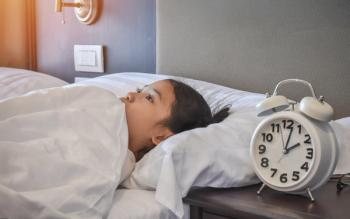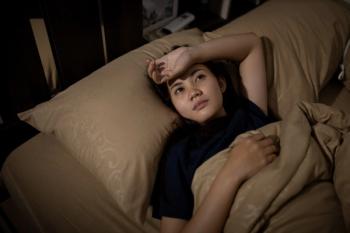
Controlled Breathing Exercises as an Adjunctive Treatment for Insomnia
New research suggests deliberate control of breathing could help regulate autonomic function in patients who have insomnia.
Controlled breathing exercises can be a solution or an adjunctive treatment for some people who have primary insomnia.
A Nonpharmacological Approach
Many patients who cannot fall asleep or stay asleep will report their symptoms to their primary care doctor, and those who have idiopathic
Research Review
Attempts at using
A few studies have examined the effects of controlled breathing on insomnia. One study, for example, assessed the effects of presleep breathing exercises on a small group of participants who had self-reported insomnia. During the study, the participants learned how to do slow paced breathing exercises for 20 minutes before going to sleep. After implementing the exercises, participants experienced a number of positive outcomes.3 Sleep onset latency, number of awakenings, and awakening time during sleep were decreased, and sleep efficiency was increased. Based on these observations, the researchers proposed that people who have insomnia may have disordered autonomic function, suggesting that deliberate control of breathing could help regulate autonomic function in patients who have insomnia, and that this could have potentially played a role in the observed symptom improvement.
Another experiment assessed the effect of a yoga breathing technique on healthcare professionals during the
While these and other similar studies are generally small, a variety of different types of breathing exercises with varying schedules (during the day or right before sleep) seem to have a positive impact on sleep, without side effects. Controlled breathing and deep breathing may help to promote sleep initiation.1 The effect on sleep initiation would not, however, explain the benefits of
Concluding Thoughts
Breathing exercises can be a safe and useful adjunct in the treatment of insomnia. People can learn to use controlled breathing on a regular basis or can add these techniques to a more comprehensive sleep regimen as a way to help manage bouts of insomnia. For patients who want to gain a sense of personal control over their sleep, such exercises may provide a good way to take part in their own management. Patients can learn breathing techniques by working with a therapist or by using videos or apps recommended by their doctor. Because deep breathing techniques have also been shown to help alleviate anxiety, which is both a cause and an effect of insomnia, these types of exercises can reduce insomnia and its effects with a multipronged approach.
Dr Moawad is Associate Editor Humanities in Neurology, Clinical Assistant Professor Case Western Reserve University School of Medicine, Div. of Medical Education, and Editor in Chief Emeritus of Neurology Times (2017-2019).
References
1. Jerath R, Beveridge C, Barnes VA.
2. Nano MM, Fonseca P, Vullings R, Aarts RM.
3. Tsai HJ, Kuo TB, Lee GS, Yang CC.
4. Divya K, Bharathi S, Somya R, Darshan MH.
Newsletter
Receive trusted psychiatric news, expert analysis, and clinical insights — subscribe today to support your practice and your patients.














